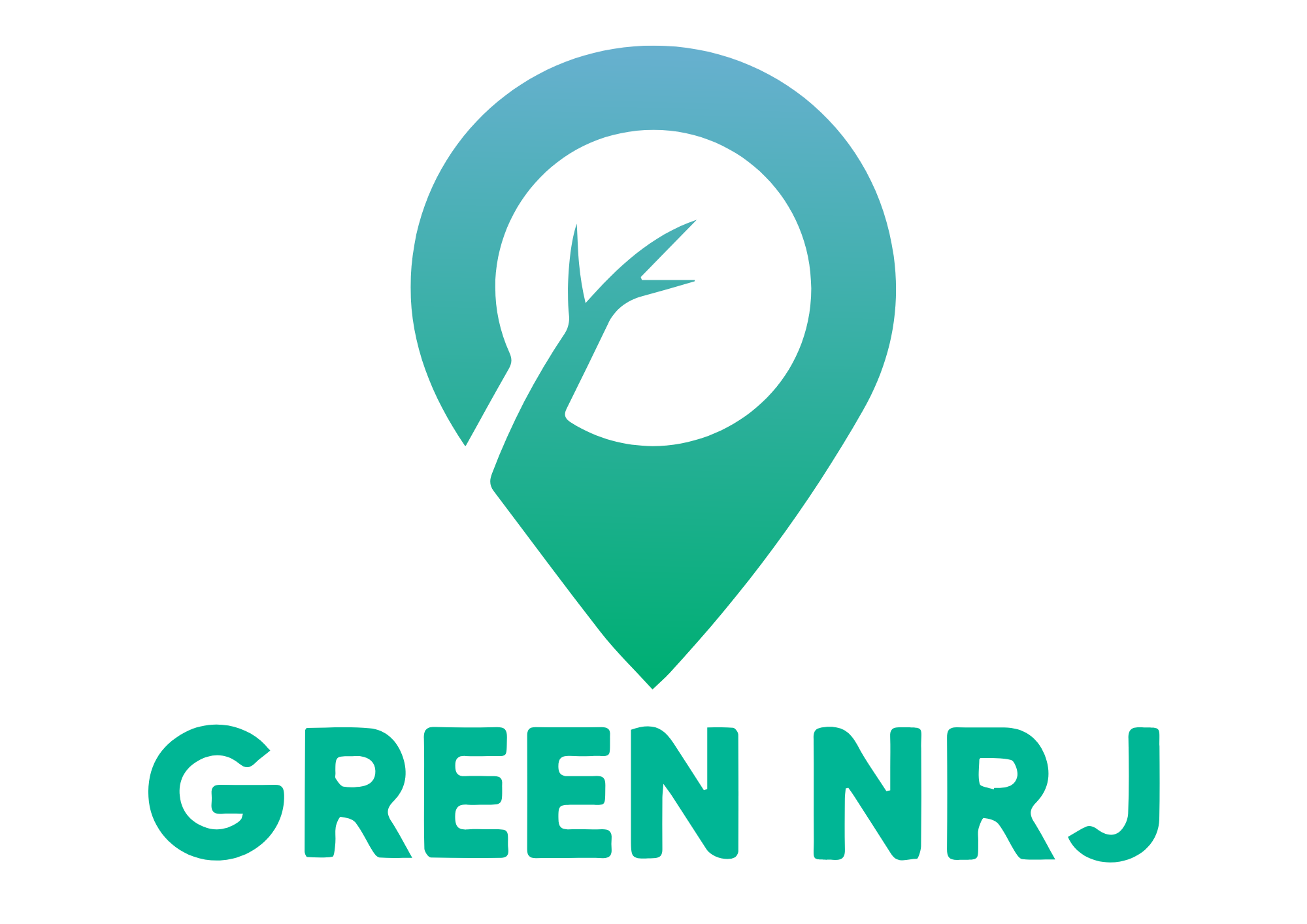- If you have any questions, please contact us!
- +84 332 952 080
- info@greennrj.com.vn
How to Claim VAT Refunds in Vietnam (2025): Guide for Foreign Investors & Exporters

How to Import Civil Cryptographic Products into Vietnam (2025 Guide)
March 25, 2025
Cosmetic Advertising in Vietnam: Everything You Need to Know (2025 Regulations & Guidelines)
April 8, 2025Vietnam’s Value-Added Tax (VAT) system is a critical component of the national tax framework and directly affects the cash flow of businesses—particularly foreign investors, export-oriented companies, and newly established enterprises. While many businesses operating in Vietnam are familiar with the obligation to pay VAT on imported goods and services, fewer fully understand the eligibility criteria, documentation requirements, and step-by-step procedures for claiming a VAT refund in Vietnam.
This comprehensive guide provides everything you need to know about VAT refund procedures in Vietnam in 2025. It covers the fundamental principles of VAT, identifies who is eligible for refunds, lists required documents, explains typical refund scenarios, and outlines the full application process. Additionally, we offer expert insights and practical tips to help businesses maximize VAT recovery and improve financial efficiency when doing business in Vietnam.
1. Understanding VAT in Vietnam
Value-Added Tax (VAT) in Vietnam is a key indirect tax imposed on the consumption of goods and services throughout the country. VAT is collected incrementally at each stage of the supply chain—from production, distribution, to final sale—however, the ultimate tax burden falls on the end consumer. Businesses, including foreign-invested enterprises and exporters, serve as tax agents responsible for collecting VAT from customers and submitting the collected tax to the Vietnamese tax authorities.
VAT Rates Applicable in Vietnam (2025):
-
Standard VAT Rate — 10%
The 10% VAT rate is the most commonly applied rate and covers a wide range of goods and services in Vietnam. This includes most consumer products, commercial services, and domestic sales. Businesses must charge this rate on taxable goods and services unless a reduced or zero rate applies. -
Reduced VAT Rate — 5%
A 5% reduced VAT rate applies to certain essential goods and services. These typically include clean water supply, medical and pharmaceutical equipment, healthcare services, education and vocational training, and cultural activities. This preferential rate supports social welfare priorities and makes essential goods more affordable. -
Zero VAT Rate — 0%
The 0% VAT rate applies primarily to exported goods and services, as well as international transportation and services provided to foreign clients. This zero rate enables exporters and foreign-invested companies to claim VAT refunds or credits, reducing their overall tax liability and improving cash flow.
2. What is a VAT Refund?
A VAT refund in Vietnam is a tax mechanism that allows businesses to reclaim the excess input VAT they have paid on purchases of goods and services when this input VAT amount exceeds the output VAT they owe to the tax authorities. In other words, when the VAT a company pays on its purchases (input VAT) is higher than the VAT it collects on sales (output VAT), the business can apply to receive a refund of the difference from the Vietnamese tax authorities.
This situation often arises in several key business contexts, such as:
-
Export operations, where exported goods and services are usually subject to a zero VAT rate, leading to input VAT exceeding output VAT.
-
New investment projects and startups, which often incur large upfront costs and VAT on capital goods before generating taxable revenue.
-
Pre-operational phases of companies where significant input VAT has been paid but no output VAT is yet generated.
Who is Eligible for VAT Refunds in Vietnam? (2025)
Eligibility for VAT refunds is strictly regulated under Vietnamese tax law, and only certain types of businesses and individuals qualify. The main categories eligible include:
-
Exporters
Enterprises that export goods or services outside Vietnam are eligible for VAT refunds when their input VAT on purchased goods and services exceeds output VAT on their exported sales. Exporters benefit significantly from this mechanism, as exports are generally subject to a 0% VAT rate. -
Newly Established Companies and Startups
Companies that are newly set up and investing heavily in machinery, equipment, or fixed assets before generating revenue may claim VAT refunds on the input VAT paid during this investment phase, provided they meet regulatory requirements. -
Investment Projects in Pre-Operational Phase
Large investment projects that incur considerable VAT during construction or setup, without yet having taxable sales, can apply for VAT refunds to avoid cash flow issues. -
Businesses with Zero-Rated Sales
Companies that sell goods or provide services subject to the 0% VAT rate, such as international transportation or certain exported services, can claim refunds on excess input VAT. -
Foreign Tourists and Organizations
Foreign visitors and international organizations may also be eligible for VAT refunds on qualifying purchases made in Vietnam when they leave the country, subject to specific conditions and documentation.
Why VAT Refunds Matter for Foreign Investors and Exporters in Vietnam
Understanding VAT refund eligibility is crucial for foreign investors, exporters, and newly established companies in Vietnam to optimize their tax planning, improve cash flow, and reduce operational costs. Claiming VAT refunds correctly can provide significant financial benefits and ensure compliance with Vietnamese tax regulations.
3. Key Conditions for VAT Refund Eligibility
To successfully claim a VAT refund in Vietnam, businesses must strictly comply with several legal and procedural requirements established by the Vietnamese tax authorities. Meeting these conditions is essential to ensure approval of the refund application and avoid delays or rejections.
1. Valid VAT Registration and Tax Code
The company must be legally registered for VAT in Vietnam and possess a valid Tax Identification Number (TIN). Only businesses that are officially recognized and registered under Vietnam’s tax system are eligible to apply for VAT refunds.
2. Legally Compliant VAT Invoices
All purchases and sales must be documented using VAT-compliant invoices, issued in accordance with Vietnamese tax laws. These invoices must clearly indicate the seller’s tax code, VAT rate applied, total value, and VAT amount.
3. E-Invoicing System Compliance
Since Vietnam has adopted mandatory electronic invoicing (e-invoicing), all VAT invoices used in refund applications must be generated through the Vietnamese e-invoice system (the General Department of Taxation’s platform). Manual or paper invoices are not accepted for VAT refund purposes.
4. Accurate and Transparent Record Keeping
Businesses must maintain complete and well-organized accounting records that clearly distinguish input VAT and output VAT. Any discrepancies or lack of clarity in financial records may result in refund denial.
5. Minimum Refund Threshold Requirement
According to current regulations, a VAT refund claim is only processed if the refundable amount exceeds VND 300 million (approximately USD 12,000) per quarter. Claims below this threshold will not be eligible for processing.
4. Common Scenarios for VAT Refunds
The Vietnamese tax system recognizes several specific business situations in which VAT refunds are commonly granted. These include:
A. VAT Refund for Exporters in Vietnam
Companies engaged in the export of goods or services often qualify for VAT refunds because export transactions are taxed at a 0% VAT rate, while input VAT is still incurred on local purchases. To claim a refund, exporters must provide the following documentation:
-
Commercial export invoices.
-
Customs export declarations.
-
Proof of payment made via bank transfer.
-
Contracts or agreements with foreign buyers.
-
Transportation documents (e.g., bill of lading or airway bill).
Exporters must also ensure that all documents are consistent, valid, and submitted within the statutory deadline to avoid complications.
B. VAT Refund for Newly Established Companies and Investment Projects
New businesses or foreign direct investment (FDI) projects often incur high levels of input VAT during their setup phase—especially on capital goods, construction materials, and machinery. If the business has not yet generated taxable sales, it can still apply for VAT refunds based on:
-
Investment registration certificate (IRC).
-
Business registration certificate (ERC).
-
VAT-compliant invoices for capital expenditures.
-
Detailed expense reports and payment evidence.
This refund mechanism is crucial for improving early cash flow and reducing the financial burden on foreign investors and project developers in Vietnam.
C. VAT Refund for Foreign Tourists in Vietnam
Foreign individuals who make purchases in Vietnam and depart the country through international airports may be eligible for VAT refunds on goods purchased. This incentive helps promote tourism and consumer spending. Key requirements include:
-
Each purchase must have a VAT invoice with a value of at least VND 2 million (approximately USD 85).
-
Purchases must be made from officially designated VAT refund stores.
-
Travelers must present:
-
Their passport.
-
The original VAT invoice and tax refund declaration.
-
The goods in unused condition at the VAT refund counter located inside departure terminals at participating international airports (e.g., Noi Bai, Tan Son Nhat, Da Nang).
-
5. Step-by-Step Process for Claiming a VAT Refund
Navigating the VAT refund process in Vietnam requires careful preparation, strict compliance, and timely action. Below is a detailed, step-by-step breakdown of how foreign investors, exporters, and businesses can apply for a VAT refund from the Vietnamese tax authorities in 2025.
Step 1: Prepare All Required Documentation
Before submitting a VAT refund application, businesses must compile a complete and accurate set of supporting documents. These may include:
-
Legally compliant VAT invoices (issued via the Vietnamese e-invoice system).
-
Customs declarations for exported goods and services (for exporters).
-
Bank transfer receipts proving payment for input goods/services.
-
Investment registration certificate (IRC) or Enterprise registration certificate (ERC) for new or foreign-invested projects.
-
Monthly or quarterly VAT declarations submitted to the General Department of Taxation (GDT).
-
Contracts, transportation documents, and export invoices (where applicable).
Tip: All documents must be consistent, properly dated, and clearly traceable to avoid processing delays.
Step 2: Submit VAT Refund Application via GDT Online Portal
Vietnam’s tax authority requires businesses to file VAT refund applications electronically through the General Department of Taxation (GDT) website or eTax portal.
-
Log in to the GDT eTax system.
-
Fill out Form 01/GTGT – the standard VAT Refund Application Form.
-
Upload scanned and signed copies of all required documents.
-
Ensure that the application is submitted within 6 months of the end of the relevant tax period.
Note: Businesses that fail to meet the deadline will lose their refund eligibility for that period.
Step 3: Tax Authority Review and Possible Inspection
Once the refund application is submitted, the local tax office will begin the verification process. This includes:
-
Reviewing the accuracy, consistency, and completeness of submitted documentation.
-
Cross-checking VAT declarations with the National E-Invoice Database.
-
Verifying export documentation and payment methods (for exporters).
Important:
If the total VAT refund claim exceeds VND 300 million (approx. USD 12,000), the tax authority may conduct an on-site inspection at the business premises to verify the authenticity of transactions and record-keeping systems.
Step 4: VAT Refund Approval and Disbursement
If the tax office is satisfied with the application, it will issue a formal VAT refund approval decision and process the payment.
-
Processing time:
-
15 working days for straightforward cases (complete documentation, no discrepancies).
-
Up to 40 working days for complex cases requiring inspection or clarification.
-
-
The VAT refund amount will be transferred directly to the business’s registered bank account.
6. Common Reasons for VAT Refund Delays or Rejections
To avoid unnecessary delays or outright denial, businesses should be aware of common pitfalls in the VAT refund process:
1. Incomplete or Missing Documentation
-
Failure to include required documents such as customs declarations, bank receipts, or investment certificates.
-
Submitting scanned files with unclear or mismatched information.
2. Non-Compliant VAT Invoices
-
Using paper invoices or invoices not issued through the official Vietnam e-invoicing system.
-
Errors in invoice details such as incorrect tax codes or missing buyer information.
3. Inadequate or Inconsistent Record Keeping
-
Discrepancies between VAT declarations and accounting books.
-
Unclear documentation of input VAT and output VAT balances.
4. Late Submission of Refund Application
-
VAT refund applications must be filed within 6 months from the end of the applicable tax period.
-
Submissions after this deadline will be automatically rejected.
7. Tips for Streamlining the VAT Refund Process
Navigating the Vietnam VAT refund process can be complex, especially for foreign investors, exporters, and newly established businesses. However, by following proven best practices, companies can reduce processing time, avoid common errors, and increase the chances of a successful refund. Here are some expert tips to streamline your VAT refund application in Vietnam:
1. Maintain Accurate and Well-Organized Accounting Records
Keeping detailed and transparent accounting records is critical for a successful VAT refund claim. Ensure that:
-
All transactions are clearly documented with corresponding input and output VAT entries.
-
Records align with monthly or quarterly VAT declarations.
-
Supporting documents (invoices, receipts, contracts) are stored in an easily retrievable and auditable format.
Tip: The more transparent and organized your bookkeeping, the faster the tax office can verify your refund claim.
2. Use Certified E-Invoicing Software Compliant with Vietnamese Tax Regulations
Vietnam has fully transitioned to electronic invoicing (e-invoicing). To be eligible for a VAT refund, all invoices must be:
-
Issued using a GDT-approved e-invoicing system.
-
Digitally signed and contain all legally required information (e.g., tax code, VAT rate, total amount).
Using certified e-invoice software ensures full compliance and minimizes the risk of invoice-related rejections.
3. Track All Tax Filing and VAT Refund Deadlines
Timeliness is key in Vietnam’s VAT refund process. Businesses should:
-
File monthly or quarterly VAT declarations on time.
-
Submit VAT refund applications within 6 months after the end of the relevant tax period.
-
Monitor any requests from the tax authority for additional documents or clarification.
Missing tax deadlines is one of the most common reasons VAT refund claims are delayed or denied.
4. Engage a Qualified Vietnamese Tax Consultant or Accounting Firm
Hiring a professional tax advisor experienced in VAT refund procedures in Vietnam can significantly improve your refund success rate. A reputable consultant can:
-
Review your documents for compliance and accuracy.
-
Prepare and submit the refund application on your behalf.
-
Handle communication with the Vietnamese General Department of Taxation (GDT).
-
Assist in responding to tax inspections or audits, if required.
For foreign-invested enterprises (FIEs), working with a local expert is especially valuable due to the complexity of Vietnamese tax regulations and language barriers.
8. How Green NRJ Can Help You
At Green NRJ, we specialize in assisting both foreign investors and Vietnamese businesses in navigating the complexities of VAT refunds. Our expert team offers end-to-end support, including:
- Preparing and reviewing VAT refund documentation
- Ensuring compliance with e-invoicing and tax regulations
- Coordinating directly with the General Department of Taxation
- Advising on strategies to optimize VAT recovery for exporters and investment projects
Our mission is to ensure that your business recovers VAT efficiently and avoids unnecessary compliance risks.
9. Conclusion
Claiming a VAT refund in Vietnam involves more than just submitting paperwork—it requires a clear understanding of eligibility criteria, compliance obligations, and proper documentation. By following the steps outlined in this guide and partnering with experienced professionals like Green NRJ, your business can maximize its VAT recovery and improve cash flow.
Need help with your VAT refund application? Contact Green NRJ today for expert support tailored to your business needs.
Related Articles:



1 Comment
[…] Claiming VAT Refunds in Vietnam […]